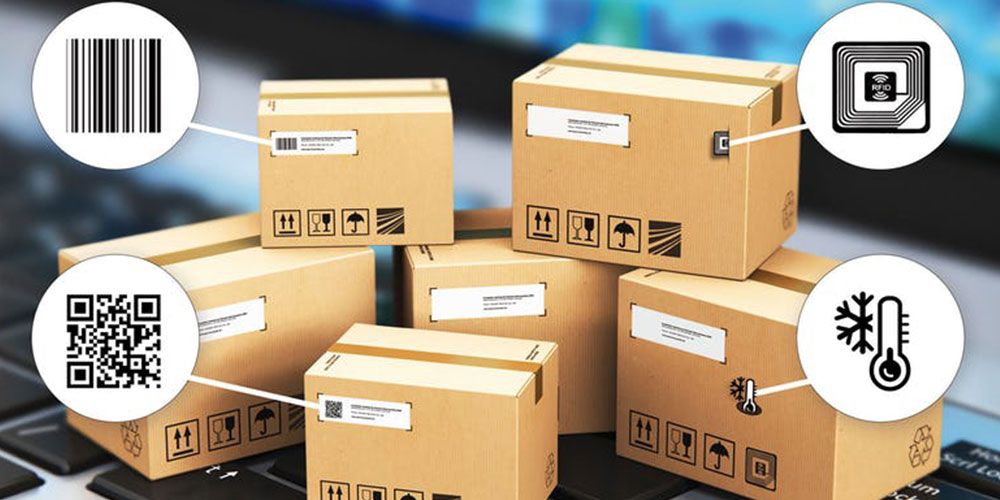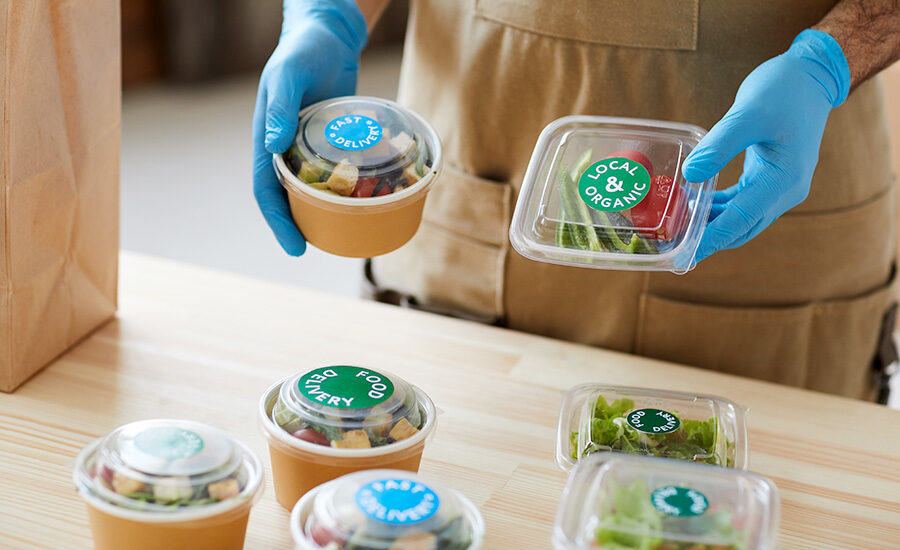
It’s simple to undervalue packaging beyond efforts to increase brand identification and loyalty. However, once your operations turn their attention to incoming items, clever packaging techniques can address that. Packaging may have a tale to tell your customers when it arrives as it becomes ever more intelligent.
There are new ways to safeguard your products as they travel through the supply chain thanks to smart packaging. Compared to other boxes, it requires more preparation, but the rewards might be substantial. Let’s examine a few of those planning requirements and where to hunt for a clever packing strategy.
Smart Packaging Defined
When we talk about smart packaging, we usually mean the packaging and containers that hold individual SKUs while they are transported from production to your warehouse or the fulfillment center of a third-party logistics partner. These choices include a variety of materials and containers for interactive technologies.
The “smart” part originates from the technology that businesses use for a variety of purposes, usually related to tracking. Earlier alternatives tracked items while they were being transported, taking notes on things like temperature during the journey. They were passive and required you to upload the readings to a system following the final delivery. To make sure nothing got close to spoiling, you would check the temperatures here.
Contemporary solutions either use the same types of readings or let anyone who interacts with the machine scan it. In addition to receiving information, they may communicate with various systems to send out alerts in the event of an issue.
For instance, those temperature sensors can actively broadcast their readings and sound an alert if they sense that a trailer or vehicle is becoming too hot, chilly, or humid. This keeps cargo safe and prevents shrinking while in transit.
Backup alarms, including a display turning on or the packaging changing color, are some ways to indicate if there was a problem at some point.
Smart Packaging Strategy 1: Start With Current Packaging
Your current efforts must be expanded upon by a clever packaging strategy. Based on requirements, expenses for inbound freight, and average outgoing orders, you wish to reduce the range of things you could utilize or attempt.
A package’s weight and size may rise with each addition. The likelihood that a sensor, tag, or other tool will modify cost and speed increases with the size of the units you ship. Consider how you can integrate smart packaging with your current packing if you’re utilizing it to reassure customers that their purchases are arriving safely. You might be able to implement smart technology without raising the cost of each last-mile delivery by lowering the amount of filler in a box or significantly raising the cost of printing Customizable PET shrink film sleeve label.
Fortunately, there aren’t usually significant adjustments to incoming freight. There is usually space in containers that can accommodate a lot of units or SKUs, or you can replace one of your smallest (or least expensive) items to accommodate the sensor. For larger items, this is the main danger. The equipment can cause a carrier to classify your box as big if you need to add a lot of room for a sensor to accurately detect temperature or moisture, or if it adds a few pounds to the order.
This typically occurs when sensors require external housing or casing, albeit this is uncommon in the industry as a whole. Look for strategies to reduce this if it is possible. Carriers are already adding more fees and surcharges for larger things, so you don’t want to be caught up in their pricing problems. To account for increases, always start a dimensional weight, or DIM weight, calculation.
Smart Packaging Strategy 2: Refresh Your Approach

You should think about how smart packaging will affect your supply chain when you get a sense of how it will affect your fulfillment. Getting more partners on board with the tools and having them inspect items for you during a shipment is the key to maximizing the use of sensors and technology.
Internally, this includes instructing drivers and warehouse staff on how to inspect goods and sensors. Find out how simple it is to get something in their hands and what they need to scan or retrieve data.
To collect information, you might need to install an RFID gate close to the loading dock or improve the Wi-Fi coverage in your warehouse. Additionally, leaders must be instructed on the meaning of alerts and how to respond to any warning indications.
Go beyond data collection and incident reporting checklists. Provide them with assistance with risk assessments and unambiguous procedures for resolving problems, discontinuing products, and safeguarding your brand.
Make a plan to discuss how this affects each internal partner’s employment. To ensure that people truly adhere to the new system, your change management plan must be strong.
Be as explicit as you can when delivering customers smart packaging. Even something as basic as “blue means ready to use” can influence consumers to think of smart packaging as useful and cool.
You can also read Tips to Buy Cheap Yet Quality Dress Material on our website.
Smart Packaging Strategy 3: Build Out Partnerships
The other side of the coin is the influence of clever packaging on partnerships. It is important to bear in mind that these verification tools are frequently used for purposes beyond your operations. They are also a collaboration instrument that enables partners to ensure the safety of items during transit. All of your stakeholders desire to access and utilize the wealth of data that sensors generate. In addition to the traceability of products, companies can benchmark their performance by utilizing consistent data. For instance, your carrier may monitor this temperature reporting data to verify that its reefer vehicles are operational or to determine whether they require maintenance prior to their scheduled maintenance.
Sensors that aid in the prevention of deterioration for your products can also contribute to the safety of other goods in transit. Carriers and couriers desire this protection because it enhances their business and reputation with you.
The wise packaging strategy is the means by which this benefit is realized. It will be necessary for you to ascertain the tools that you and your colleagues employ, as well as the manner in which these tools interact with the new sensors.
In this manner, you can select an alert instrument that is user-friendly for the driver and is compatible with in-cab technologies or displays. Alternatively, if the fulfillment center is unable to detect the specialized humidity sensor, it will be unable to report the issue and guarantee the safety of your products for consumers to purchase and utilize.
Your scanning and utilization collaborators must be capable of assisting you in the development of this data stream. It will be necessary to present a compelling argument for their inclusion as a partner in this endeavor after determining who is competent.
Data sharing is an effective starting point. Additionally, you may inform your associates that this is the method by which you will ensure their accountability. Data from these devices can assist in identifying the individual who may have caused an issue or damaged an item during transit. Numerous stakeholders may be inclined to implement novel technologies in order to mitigate liabilities and verify procedures.
Smart Packaging Strategy 4: Highlight Sustainability Efforts To Customers

Your customers care more about the environment, which affects what they buy. Recent polls show that 72% of people are buying more eco-friendly items now than they were five years ago. 81% said they planned to buy even more eco-friendly things in the next five years. The packing is an important part of this.
This is done directly by smart packing, which keeps people from buying food that will go bad. Sustainable PET shrink film sleeve label can be used to make eco- friendly packaging. These customers are ready to pay more for goods that last longer and come in packaging that is better for the environment. They’ve shown that if you make a good case, they’ll spend a little more.
You can also use the package to show that you care about the environment. Allow buyers to see the information and the path that their items took. Then, put a link to a website that shows how you plant trees, reduce your carbon footprint, or do something else environmentally friendly. With these tools, even simple things like how much recycling you do can make your customers feel better.
Keep Thinking Creatively With Smart Packaging Strategies
There are many good things about smart packing, but they all cost money. Let’s say you want smart packaging that can be used in different places or by people who shop in different ways. So, your goals should be to study and be creative. Look for options that are simple to build and use and that give you useful data without scaring your partners or customers.
Figure out what your biggest goal or promise is and go after that first. If there isn’t a lot of damage or loss during shipping, choose something that will get people’s attention.
Customers can quickly tell when something is fresh and ready to drink by things like cans that change color when heated. Being smart about packing has more benefits than just one use or person. Keep working to draw attention to the things that matter for your bottom line.
Keep or boost your sales. Help your partners and buyers. Lessen the loss. Take care of the things that make growth and wealth hard. You can use new technology and sensors in a smart way, and you can also start to think of other ways to make your supply chain, buying, sales, and shelf stability better.
![Afgani & Punjabi Salwar Suits Designs [Latest 2024] Afgani & Punjabi Salwar Suits Designs [Latest 2024]](https://thetecholic.com/wp-content/uploads/2024/10/Punjabi-Suit-Design-211x150.jpg)
